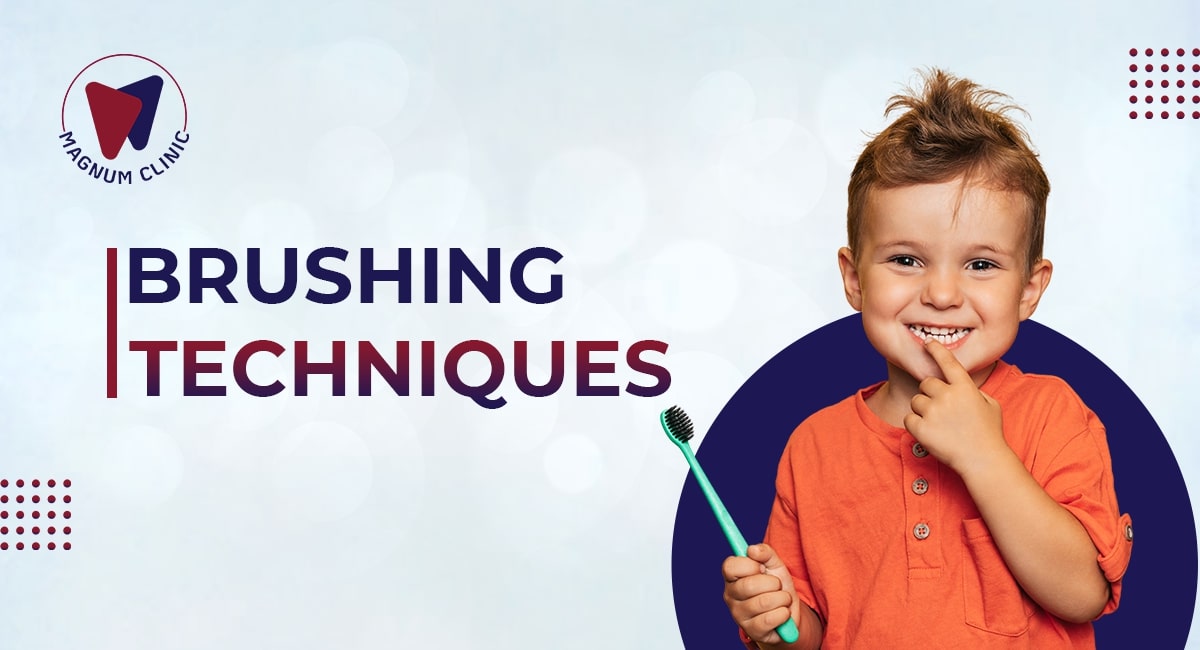How to Brush Your Teeth Properly: Brushing Techniques

Introduction : Prevention is always better than cure and Brushing your teeth is crucial to maintain good dental health, our first line of defense is keeping teeth clean by brushing twice a day. However, if we don’t brush properly harmful bacterial plaque can sneak in and lead to tooth decay and gum disease. so lets take a look at different tooth brushing techniques that will help.
Brushing techniques
Modified Bass or Sulcular Technique:
This technique is good for those with periodontitis. In this method, the toothbrush bristles reach under the gums to scrub off plaque before it hardens into tartar and causes gum disease.
Steps :
1. Place the toothbrush parallel to your teeth with the bristles toward the gums and tilt the brush to a 45-degree angle and move the bristles slightly under the gumline.
2. With firm but gentle pressure, wiggle or vibrate the brush back and forth or in a small circular motion 15 to 20 times and the brush should cover two to three teeth at a time.
3. To brush the insides of the front teeth, hold the toothbrush in a vertical position and use the bristles on the toe of the brush, making sure they are getting under the gum tissue. Upper teeth Lower teeth.
4. Brush the chewing surface of the molar teeth and don’t forget your tongue.
Charter Technique
This technique is recommended for those with spaces between teeth, exposed root surfaces or who had periodontal surgery or gum recession, also effective for people with orthodontic appliances or fixed partial dentures.
- Place the bristles on the gumline at a 45-degree angle pointing toward the chewing surface or crown of the tooth.
- Gently vibrate the brush for 15 to 20 counts, using short circular strokes or small back and forth motions, and then reposition the brush to the next area
- Move around the mouth in the same pattern, brushing all tooth surfaces, both inner and outer, as well as the chewing surfaces of the molars
Brushing Techniques for Children
Roll Method
- The brush is placed in the vestibule, the bristle ends directed apically, with the sides of the bristles touching the gingival tissue.
- The patient exerts lateral pressure with the sides of the bristles, and the brush is moved occlusally.
- The lingual surfaces are brushed in the same manner, with two teeth brushed simultaneously.
Horizontal Scrubbing Method
The brush is placed horizontally on buccal and lingual surfaces and moved back and forth with a scrubbing motion.
The horizontal scrub technique is most naturally adopted by children.
Fones/Circular Scrub Method
-Place the toothbrush on teeth set and then activate the bristles by slightly pressing against the teeth 4-5 times on each set of the teeth and move to the next.
-This technique is best suited for very young children or those who in general lack muscle dexterity.
*Regarding the choice of a toothbrush, many of us opt for hard-bristled toothbrushes thinking that the harder we scrub, the better we are cleaning our teeth. Actually, it’s nothing more than a misconception! The truth is, hard-bristled toothbrushes can damage the gums, root surface, and protective tooth enamel. Hence, for most people, a softbristled toothbrush will be the most comfortable and safest choice
